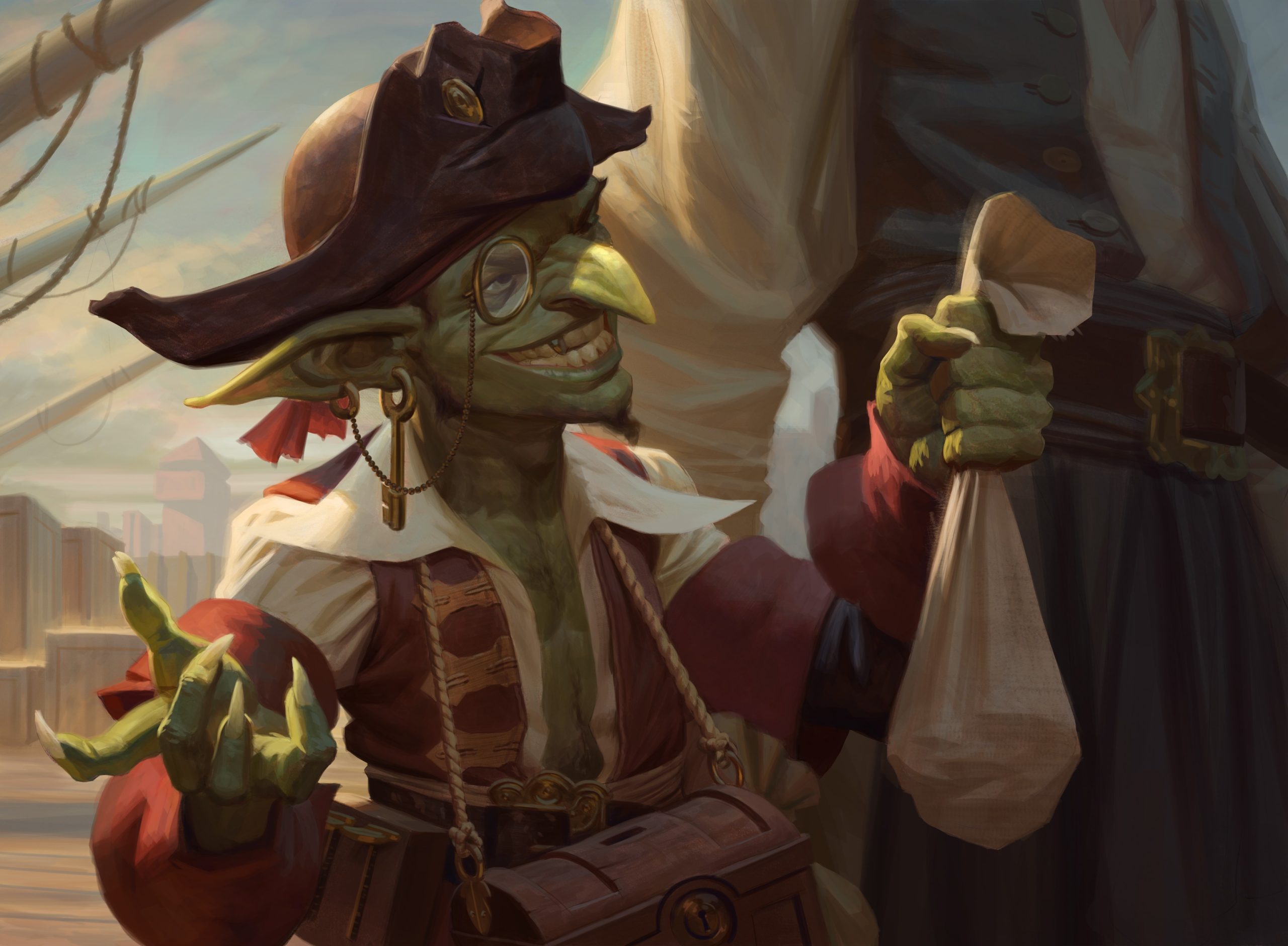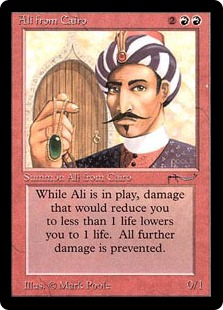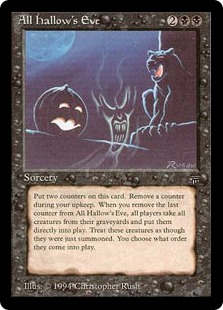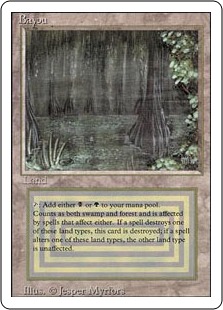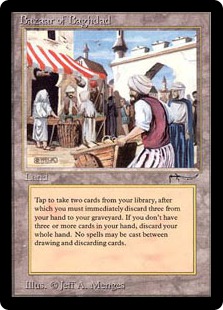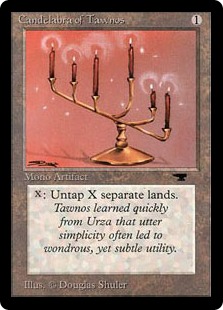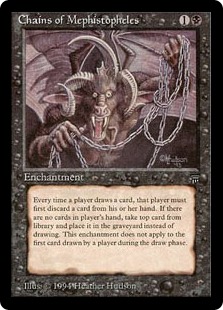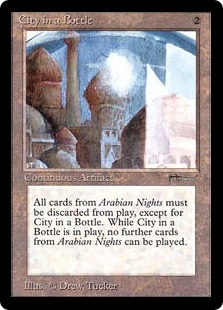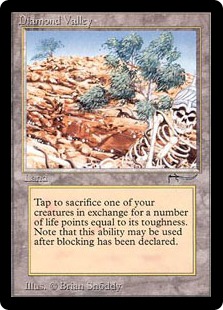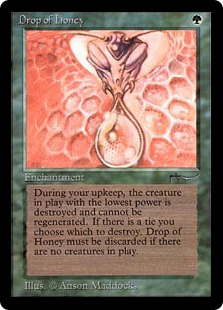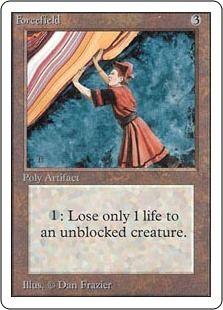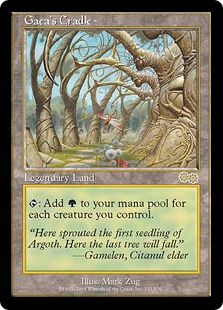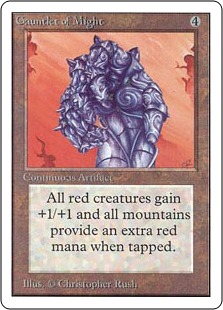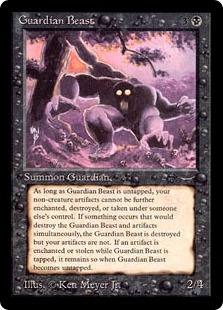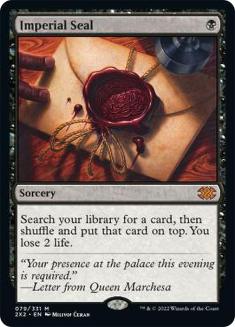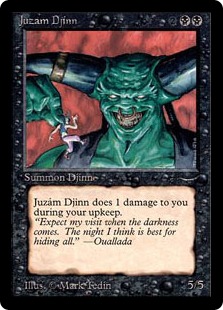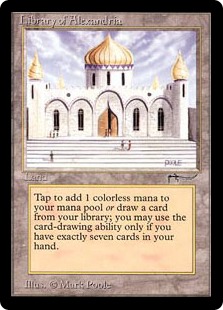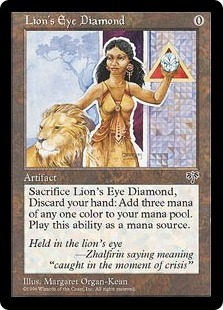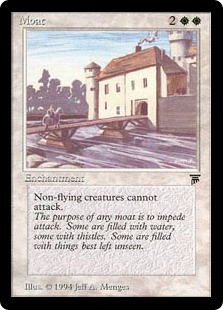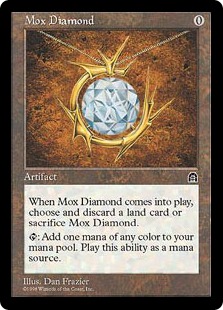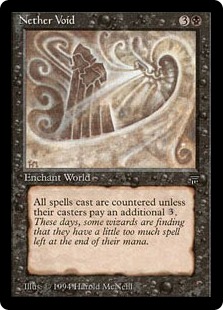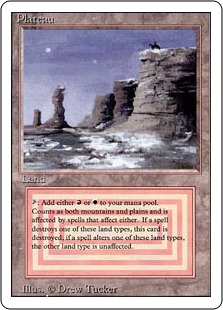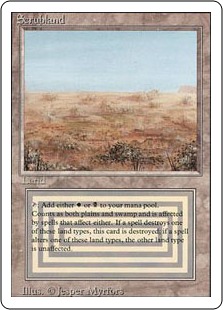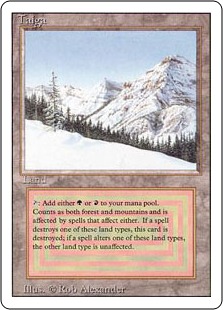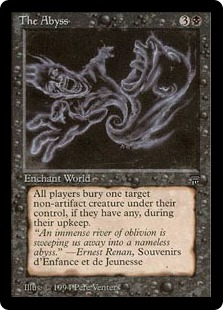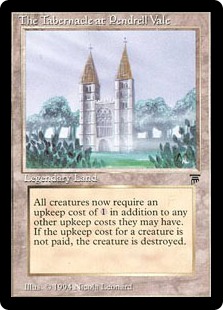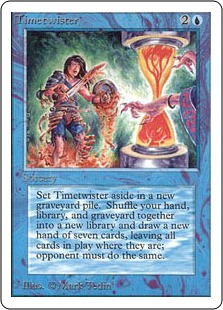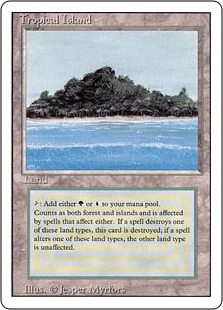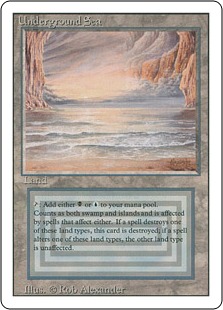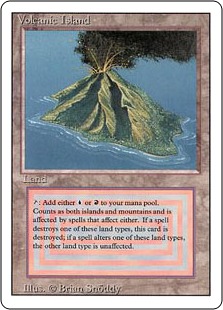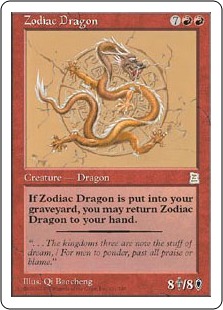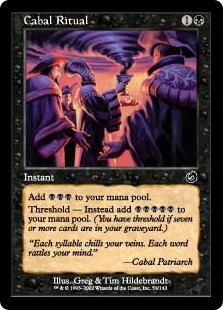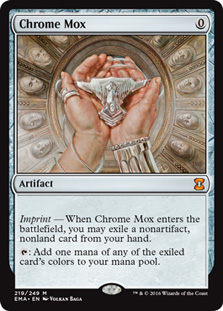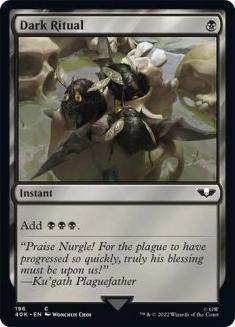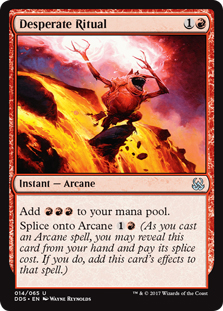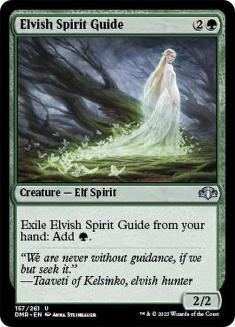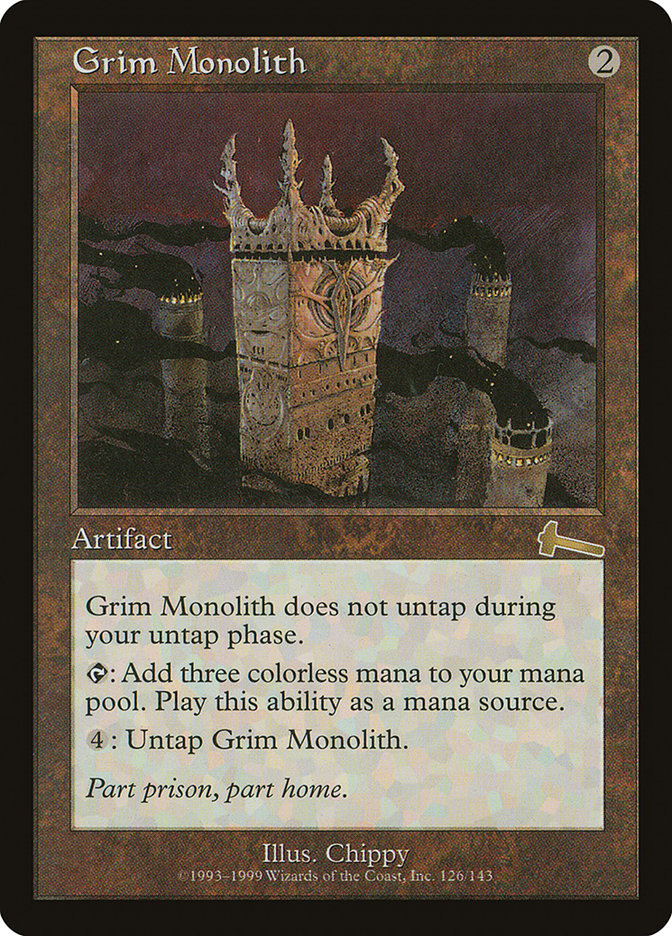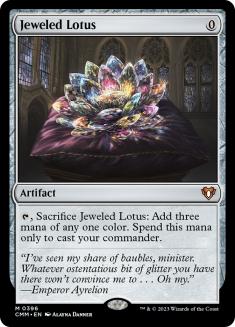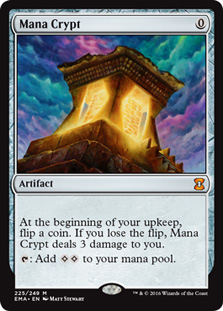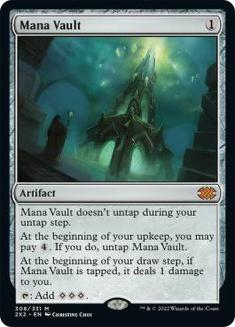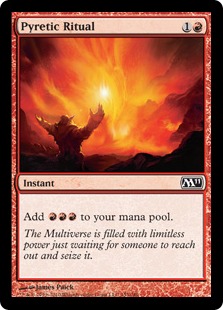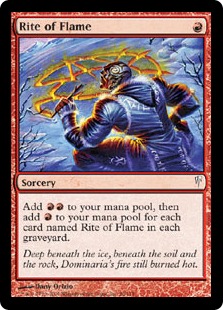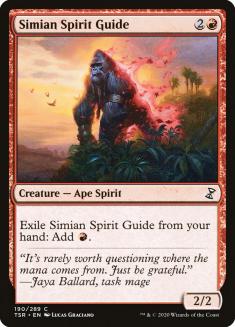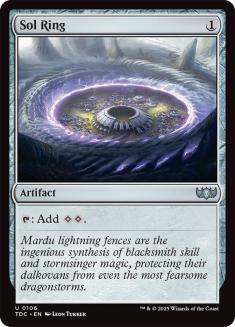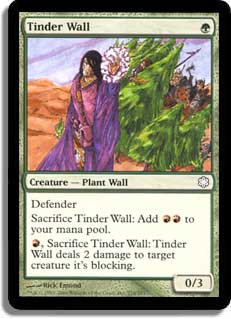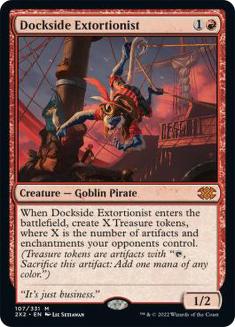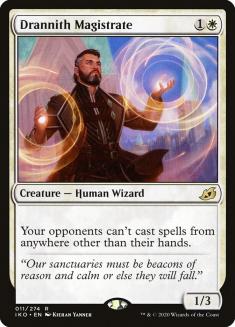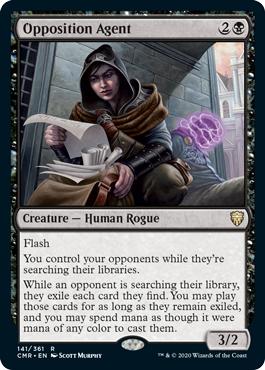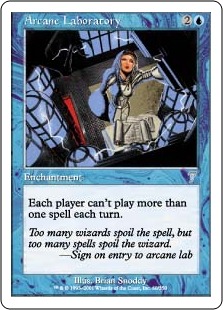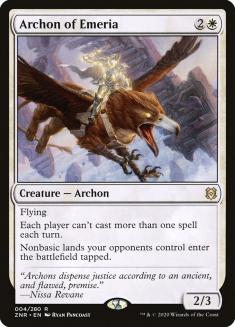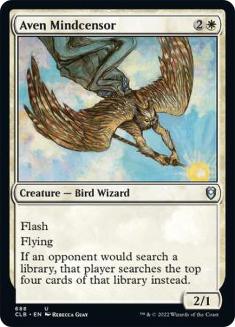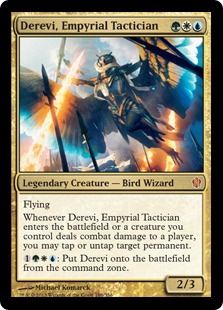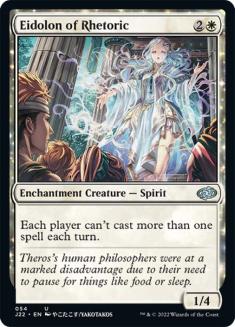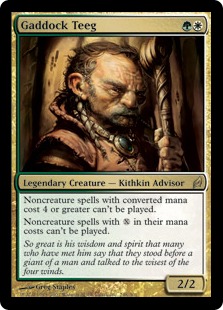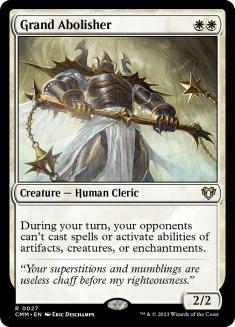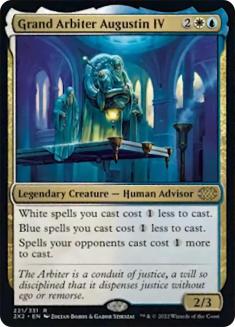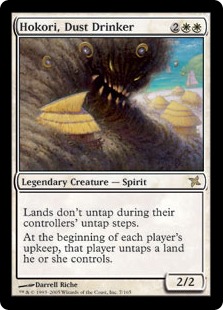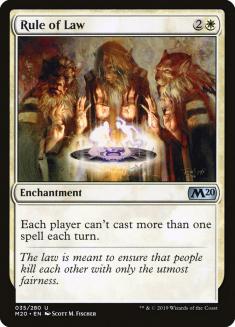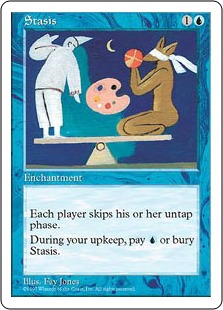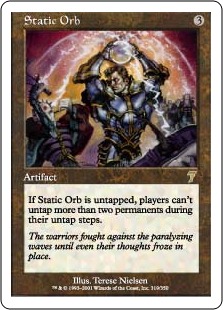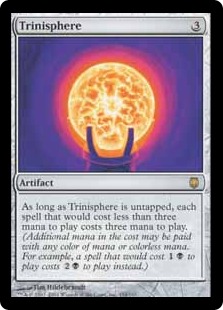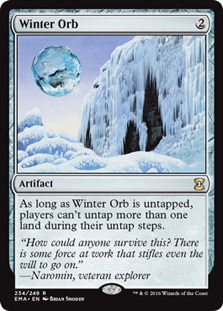I’m not even writing a pithy opening sentence before I write the disclaimer for this piece.
I’m telling you right up front that what follows is me stretching my outside-the-box idea legs, a dreamy what if? piece that looks for a creative way to address some of the issues that folks across the diverse Commander-verse might have with the format’s Banned List. It’s not something that I’ve discussed with the other members of the Commander Rules Committee (RC) and it’s certainly not something that we’d consider implementing without a great deal of thought, planning, and detailed investigation. The other three might call me crazy for just dreaming it up — but indulge my madness for a bit, if you don’t mind.
Banned List Modules are sets of cards supplemental to the primary Banned List, crafted for particular player experiences. More specifically, the Modules are there for particular experiences that players don’t want to have. The Commander player base is broad and we like (and dislike) many different things. Modules are an alternative to formatting Commander, a topic I wrote on back in June. Unlike with temporal- or set-based formatting, they allow us to keep the entirety of the Eternal card pool and then whittle down from there. While we on the RC prefer as short a Banned List as is reasonable and possible, Banned List Modules can keep the primary list short while providing plug-and-play options for both local groups and players in games at larger events where they don’t know anyone.
We’d want to keep the Modules small and easily defined as well. Unless they were somehow grokkable at a glance, it makes sense to keep things tightly constricted. Perhaps down the road there might be room for meta-Modules, but for the moment we’ll stay focused. We’ll give the Modules names in hopes of being able to grasp what each is trying to do.
Defining power level or game style is an exercise that’s fraught with some difficulty, as different players have different definitions for things. One person’s nine is another’s six, if you will. The primary purpose of Banned List Modules would be to offer players some helpful, common language on navigating pregame discussions. The main reason to engage in the effort in the first place is the desire to simply help players get and find the best games they can, wherever they are. Even if this proposal would eventually resonate with enough people that it would be worth adopting, it’s by no mean a complete solution. There’s only so much we can reasonably do from the top level to ensure players have positive experiences. A Banned List, regardless of how well thought-out and detailed, is only one part of a bigger picture.
While Modules wouldn’t replace the primary Banned List, I can imagine a situation in which they might loosen up the hold on some cards that are in the gray area. As I mentioned last week, we could ban or unban a number of cards and stay philosophically consistent. If players are freely and routinely adopting the Modules, that might create the space a borderline card like Sway of the Stars or Coalition Victory needs to slip off the main list.
You can’t talk about a new idea without exploring the downsides. One strike against Modules is that they’d be extra baggage for players to keep track of. It’s not that Magic players aren’t smart enough; it’s a question of facility for getting into the format, and to some extent for staying there for the less-enfranchised player. That’s the major argument against bringing back Banned as a Commander, but I don’t think it applies in this circumstance. Modules would be an optional feature, not a main rule. We’d want to be clear with that in the messaging. It’d make some sense to have a new tab on the website with the complete explanation of them as a supplementary rule and their purpose as an aid to players finding and creating the kinds of games they prefer.
The second strike is the administrative overhead. The first part of that is the creation of such lists. Then there’s the maintenance. With each new set would come evaluation of the cards for multiple sets of criteria instead of a single set. An administrative responsibility that some folks might realize is that we’d want to have discussions with the player base about the list of Modules.
It’s not that the discussions are difficult (well, the good-faith ones, anyway); it’s simply that they take time. Time is our most precious resource and we find that it’s already stretched thin for lots of folks on both the RC and the CAG. I’d be leery of loading up anyone with additional responsibilities. I think the good news is that we might be able to farm out a portion of the work to some of our trusted friends and we might be able to get some volunteer support from the broader community.
What’s a Module look like? The simplest version is a name and a list. That list is more useful when it’s accompanied by a description of what it’s there to accomplish (and please note that these are likely to solve problems that some percentage of players would like, not necessarily specific things that we on the RC are trying to address so directly). To wit:
The Barrier to Entry Module
The purpose of the Barrier to Entry Module is to ban cards whose cost have gotten so exorbitant that most players simply can’t afford them. This list draws its name from a ban criterion that we’ve since done away with — Perceived Barrier to Entry.
The reason I’ve called it that is to actually address one of the misconceptions about Perceived Barrier to Entry. Many folks believe cards like the Power 8 were banned because the price of the cards. That’s not correct, despite the convenient coincidence. Cards banned under Perceived Barrier to Entry were there to disassociate the format from Vintage. We didn’t want to become an alt-Vintage format, which we felt would limit our growth possibilities.
We really didn’t want people strolling by tables, seeing Power, and immediately moving on because the format was out of reach for them from a strategic buy-in sense. It doesn’t matter how much beer and pretzels you have, Vintage isn’t a casual format (yes, I realize that it can be played casually; we’re talking about primary use case here). Especially at the time we were doing this, it was the pinnacle of difficult-to-get-into formats, and not just because of the price of some of the cards. The format was/is simply demanding. In creating what became Commander, we were looking for something that would let players relax a great deal more, both from a gameplay and card acquisition sense.
Back to the point, the Barrier to Entry Module would tag the high-value cards that aren’t already on the Banned List. It wouldn’t want to set a hard price point, since prices do fluctuate, but it would want to start with a line somewhere. The trick of this particular list is finding the line that doesn’t lead to a group that’s too large, like the 600 cards at over $200, although that number contains the same card in multiple printings if it applies. Even our over-$500 list has over 300 non-unique entries.
What we find here is that we can’t just go on price alone, since some of the cards are expensive due to rarity, not playability. Using the $500 line of cards that don’t have much cheaper alternatives (Alpha Wrath of God is super-expensive; the Eternal Masters version is less than five bucks) and aren’t already banned, we come up with:
That’s 34 cards (or 24 plus the ten OG dual lands), nearly as many as are already on the primary Banned List. We’d either have to cut from there or just let the few Arabian Nights cards that no one would play be casualties. I’d go with the latter and pull Ali from Cairo, All Hallow’s Eve, City in a Bottle, and Zodiac Dragon from the list, since they’re not going to wreck any games anytime soon, nor do they create any kind of FOMO, for a nice, round 30. That’s still a little awkward, but definable. If someone says “it’s dual lands and the other super-expensive cards,” you can take a guess and land on most of the list.
There might be an argument to go down to $250, but even sorting out the non-uniques, we have too many cards. You can see what kind of overhead this Module would take, as we’d constantly have to keep an eye on the secondary market. It’s highly unlikely that any new cards would be added to it, which is a bit of the good news. Some folks would argue that this makes the case to just ban the Reserved List, but that’s 572 cards. We’re not going there, and we’re not banning Phelddagrif.
The Fast Mana Module
There’s a contingent that believes fast mana is one of the format’s biggest problems and getting rid of it can resolve some of the others. There are also just players that like a game that unfolds more slowly. Removing fast mana takes most super-early wins off the table.
I’m using the term fast mana to mean anything inexpensive, playable on Turn 1 or Turn 2 (maybe even up to Turn 3) that always produces more mana on the turn we see it than it costs to cast. In the strictest definition, a card like Jeska’s Will wouldn’t apply since it’s not guaranteed (despite the fact that in context, it nearly always does). The beginnings of this Module then gives us a mix of spells and permanents:
I’d add Jeska’s Will, Culling the Weak, and Infernal Plunge to the Module because they’re contextually relevant. I’d also add Ancient Tomb and maybe City of Traitors, since they’re a guarantee of tapping for more than a normal land —unlike Gaea’s Cradle, which needs more setup to be relevant; by contrast, I’d call Cradle Big Mana, which isn’t nearly the same. Exploration doesn’t strictly apply because you have to have an extra land in hand, but it’s close enough that I’d want to add it, since if you’re keeping it Turn 1, you definitely have that extra one to drop. We’d want to seriously consider Lion’s Eye Diamond, although it’s a bit situational. I might think about Gemstone Caverns, which will give you extra mana in the form of a free extra land drop 75% of the time.
The big one to talk about here is everyone’s favorite Goblin Pirate, Dockside Extortionist. Does it belong in the same contextual batch as Jeska’s Will and friends, or is it only that kind of contextual for a portion of the format’s player base? At two mana and understanding the broad tendency of the player base to love their mana rocks, I’d say that it’s fast in enough situations to go on this list.
For the time being, we’ll be conservative with what we put into this Module. Adding Jeska’s Will, Culling the Weak, Infernal Plunge, Ancient Tomb, Exploration, and Dockside Extortionist, that’s twenty cards, so reasonably manageable. The Module is relatively easy to describe and understand, so that number of cards doesn’t seem problematic.
The Stax Module
This one is a big can of worms, since the definition of what fits into the category can be quite broad and many players have their own takes on what it is and isn’t. Our friends at EDHRec have a pretty good breakdown. Simply put, Stax is a resource denial strategy that prevents opponents from playing the game at a normal pace. It’s an excellent strategy for winning games, much less so for creating social ones. The purpose of the Stax Module is to ensure that players don’t get shut out from playing the game, especially in the foundational, early turns.
Mana denial is the poster child for Stax and making things cost more is effective mana denial. Cards like Winter Orb and Static Orb head up the list. I’d call Trinisphere pretty effective at denial as well. The potential commanders that are obvious for the list are Grand Arbiter Augustin IV; Hokori, Dusk Drinker; and Derevi, Empyrial Tactician (Gaddock Teeg also fits here). Drannith Magistrate goes on because it prevents opponents from casting their commanders, a pretty significant denial in this format. Opposition Agent is another kind of denial of a thing that players do in the format as well as being a card that folks talk about wanting banned outright, so it’s a safe addition. Opposition Agent is way more oppressive than Aven Mindcensor, which I think we only put on the list if we’re not worried about it getting too large.
We have to be careful that we don’t add cards to this list simply because they synergize with Stax pieces. We want to be careful with the size of this Module, since it could otherwise cascade to the point of getting unwieldy. Esper Sentinel is what brought the thought to mind, but cards like Thalia, Heretic Cathar and Thalia, Guardian of Thraben both fit (or don’t fit, as the case may be) because they don’t hit all lands. We also don’t want to include cards that attack particular strategies, like Rest in Peace, Collector Ouphe, Grafdigger’s Cage, or Hushbringer, which may fit the broadest definition of Stax. I suspect that once we eliminate most of the mana denial, we don’t have to include cards like Aura of Silence.
The cards that are on the borderline for the Stax Module are the ones that limit players to only one spell per turn: Arcane Laboratory, Archon of Emeria, Eidolon of Rhetoric, and Rule of Law. I’m going to lean onto the side that considers them a hard component of Stax and put them on the list, but it’s easy to see the argument for the other side; it wouldn’t undercut the Module if we left them off. The other one is Grand Abolisher, which completely shuts opponents out of your turn. It’s a dangerous enough card to include.
This brings us to the following manageable list of sixteen cards:
Because the lines of what Stax might be are so blurry, I’d want to do significant work with an educated group of players before actually finalizing a list. There are a few cards that go onto it pretty easily and lots (many of which I haven’t mentioned here) that you don’t have to argue too hard for. Finding the right balance would be key.
Moving Forward with Modules
This is merely an introduction to the concept of Banned List Modules, ideas on how to think about constructing them, and a springboard to further thought. There are certainly other Modules to make that address styles of games that players simply don’t enjoy. We could have the Competitive Module featuring Thassa’s Oracle; the Mass Land Destruction Module with Armageddon, Obliterate, and friends; and more. The whole thought exercise isn’t about shifting how we manage the format, but about giving players both the language and tools to make sure that they have the best games of Commander possible.
Visit my Decklist Database to see my Signature Decks, the Chromatic Project, and more!

